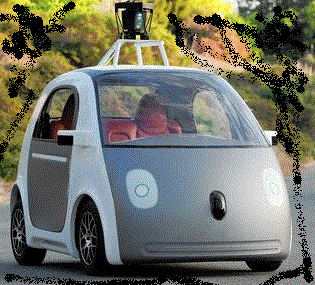Autonomous Cars
Robot Cars’ Top Advantages.

Autonomous Cars: How Practical Are They?
Robot cars are also known as autonomous cars, self driving cars, robot cars, or driverless cars. It is a type of autonomous driving vehicle that is capable of performing the function of a human-operated vehicle on its own. Likewise, it has the capacity to sense its environment and navigate on its own. All that a human needs to do is simply choose the destination of the vehicle and perform mechanical operations and repairs.
Although robot cars have not yet achieved the mass-market appeal of traditional vehicles, they have presented several advantages that have been noted for their efficiency and desirability:
• Fewer crashes. Robot cars have autonomous systems that have better reliability than human drivers.
• Better roadway capacity and reduced traffic congestion. Autonomous cars have a reduced need for safety gaps, such as platooning while they have the capacity to manage better traffic flow.
• Optimized road experience. Robot cars could detect how to reach a destination the fastest way, taking into consideration the traffic congestion.
• Lower fuel consumption and gas emission. Robot cars are eco-friendly and they are better in managing traffic flow by removing safety features.
• Convenience. Because robot cars are autonomous, they do not require occupants to endure the inconvenience of driving and navigation. Thus, occupants are relieved from the constraints associated with driving. Also, issues regarding age, suitability and disabilities are eliminated with robot cars.
• Elimination for parking scarcity. Robot cars could drop off passengers, park anywhere there space is available, and return when the need for the vehicle is needed.
• Enhanced car-sharing services. Autonomous cars could boost car-sharing services, like Zipcar and Gataround to cut the number of vehicles around the world. This also means reduced space needed for parking as well as the costs and inconvenience of hiring drivers.
• Less likely to violate traffic rules and cause traffic collisions. The need for traffic police and vehicle insurance could also be significantly reduced if not eliminated.
• Reduced need for road signage. Robot cars could receive important communications electronically, thus minimizing the need for physical signs and line markings.
• State-of-the-art facilities like no other. Robot cars are equipped with the most state-of-the-art equipment and facilities that most traditional vehicles don’t have including laser, radar, lidar, GPS and computer vision. Robot cars have the most modern control systems that interpret the information to determine the necessary navigation paths, obstacles and relevant signage. Robot cars also update their maps depending on the sensory input, allowing them to navigate even in the most unknown environments.
.